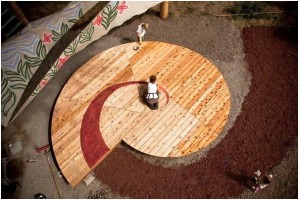Widgetized Section
Go to Admin » Appearance » Widgets » and move Gabfire Widget: Social into that MastheadOverlay zone
Is Civics Dead?
The views expressed are those of the author and do not necessarily reflect the views of ASPA as an organization.
By Michael Jacobson
June 12, 2015
 There is overwhelming evidence of decreased social capital. Voter turnout in presidential years max out to approximately 50 percent and drop to 30 percent or lower in off years. Civics education testing is required in only nine states to get a high school degree. But do these features alone define the condition of our potentially anemic and moribund civic health? Or does the sustained increase in charitable giving, the creation of crowdsource funding models like Kickstarter and the proliferation of apps for social gathering such as Meetup suggest civic involvement of a different sort than we have traditionally thought?
There is overwhelming evidence of decreased social capital. Voter turnout in presidential years max out to approximately 50 percent and drop to 30 percent or lower in off years. Civics education testing is required in only nine states to get a high school degree. But do these features alone define the condition of our potentially anemic and moribund civic health? Or does the sustained increase in charitable giving, the creation of crowdsource funding models like Kickstarter and the proliferation of apps for social gathering such as Meetup suggest civic involvement of a different sort than we have traditionally thought?
The changing way in which people network (think more Facebook and less picket fence) may signal to government the need to change our historic practices around community engagement, government participation and civic participation. The core set of assumptions may also require adjusting.
For example, we have a representative democracy which presumes a knowledgeable and active electorate and an elected leadership representing their constituents. Some argue that the role of money and gerrymandering have eroded the validity of this format. In response, some suggest a more “full contact” form of democracy termed participatory democracy, where more people have access and opportunity to participate in government and civic life beyond periodic voting or the occasional tax.
This fundamental question surrounding participation critically matters to governments. If citizens view government as a consumer, rather than as owners of the system, the choices made by the public will change. The time and energy citizens will expend engaging with government will decrease and it is likely that the resources available for government public goods will also decrease.

The challenge of this paradigm shift is not for the public to find more time, file more public disclosure requests and spend more weekday evenings at community centers providing testimony. The challenge is for governments to enable easier, faster and more consumable access to the information and decision making processes that people care about. Rather than continuing with current “black box” practices where decisions are not acknowledged and “participation” is seen as placing cameras in the public deliberation chambers of legislatures, government leaders ought to be rethinking the DNA of how the work is done, who gets to participate and who gets to decide.
There are many examples of governments utilizing social media, big data, budgeting for outcomes and online engagement tools to improve the awareness and opportunity for participation in the day-to-day decision-making of government. Gavin Newsom’s Citizenville captures the energy and spirit embodied by many of these innovators.
Some additional examples include:
- Here in King County, we used an online engagement tool as part of a broad suite of approaches to gather information for our county strategic plan. We had over 500 participants in an online community dialogue in contrast to the paltry 21 person cumulative turnout at seven in-person evening events! People care. They just don’t care that much and can’t afford an entire evening to give their opinion. We tried to meet them where they are and found people with passion, interest and real community concern.
- Mike Lydon goes a step further believing that tactical urbanism is a grass-roots strategy for the public to build social capital, provide community-driven solutions to urban challenges and help local governments be more attuned and responsive to the needs of their citizens. This movement is born of frustration with the responsiveness and speed of government to solve daily challenges. Nonprofits around the country, such as the Pomegranate Center, are tackling community-building and social problem-solving with creative approaches.
- The National Conference on Citizenship (NCOC) has been working with communities to standardize the measurement, use and improvement of a Civic Health Index. Using four key dimensions (civic knowledge, civic connection, civic trust and civic action) and multiple measures, NCOC is using rankings among peers and common metrics to inform local discussions, prompt action to celebrate strengths and focus on improving comparative deficits. Seattle’s City Club recently updated the community’s civic health index and found while people are highly engaged when measured by community involvement, buying or boycotting a product or volunteering, they were quite low in giving or receiving favors or talking with neighbors (locally called the “Seattle Freeze.”)
But what of civics? Is the concept of teaching about government fundamentally outdated or are the ways we teach it, demonstrate it and measure it flawed?
I would argue civics as a concept is alive and well. But perhaps the traditional institutions of academia and government aren’t doing what they need to do to make civics tangible, relevant and even visceral for an increasing diverse, mobile and time challenged community. Better public awareness about government’s role, services and results are a critical starting point. The more we can open the practice of government in easy, accessible and relevant ways, the more residents and citizens will feel like they are part of the solution rather than critics, consumers or perhaps worst of all, disengaged entirely.
Author: Michael Jacobson is the deputy director for performance and strategy for King County’s Office of Performance, Strategy and Budget. He was the 2013 winner of the ASPA Center for Accountability and Performance’s Harry Hatry Distinguished Performance Measurement and Management Practice Award.






 (4 votes, average: 4.00 out of 5)
(4 votes, average: 4.00 out of 5)
Follow Us!